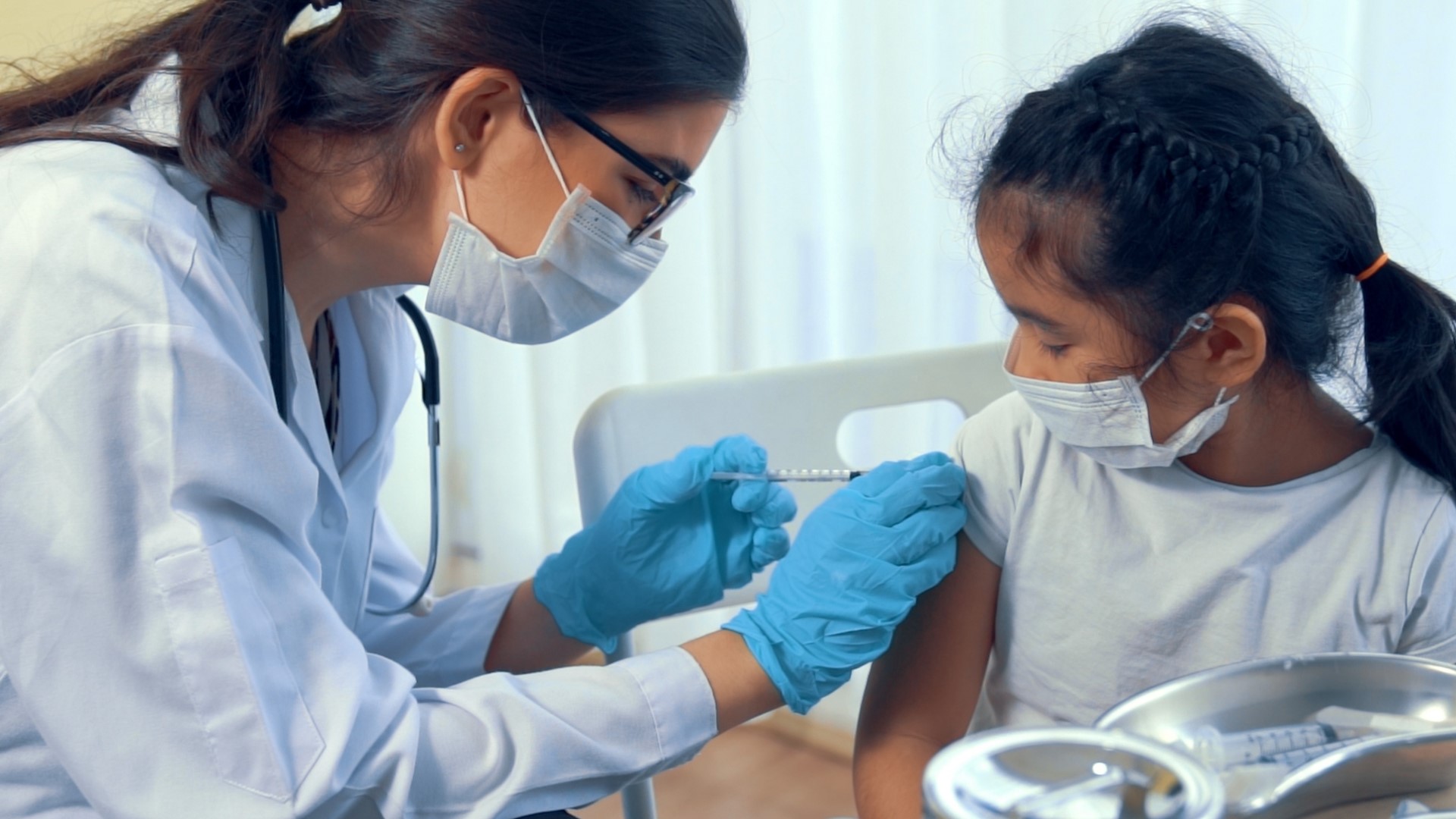COLUMBUS, Ohio — “There continues to be real progress in the fight against COVID-19, which should give us genuine optimism. But our optimism needs to be tempered by the fact that the numbers on the ground continue to tell us that we are most certainly not out of the woods yet."
Those are the words from Ohio Department of Health Director Dr. Bruce Vanderhoff as he provided a COVID vaccine update during a press conference Friday morning.
"Our downward trend has plateaued -- and now even increased a bit over the last few days -- and our COVID-19 cases remain very high," he added while noting that Ohio's three-week trend is around 3,700 daily cases.
Dr. Vanderhoff also shared that more than 34,000 children ages 11 and younger have now started their COVID vaccination process in Ohio.
We streamed the entire press conference, which you can watch in full below:
“We are very pleased with the enthusiasm that we’re seeing for vaccination of those 5-11, because children most certainly can and do become ill – even seriously ill – and can suffer lasting complications from this virus," Dr. Vanderhoff said. "Even for those who don’t show symptoms, they can carry the virus home to younger siblings or vulnerable adults, continuing the vicious cycle of spreading the virus in families and communities.”
He then addressed the concept that some parents may think their child catching a mild case of COVID-19 might be a better alternative to receiving the vaccine.
"The problem with taking that chance with your child’s health is that there’s no way to know if your child will end up with a mild case, need hospitalization or worse," he explained. "The COVID-19 vaccines, on the other hand, create a safe, reliable, protective immune response that are by far the safest way to protect children from severe consequences of COVID-19.”
Dr. Vanderhoff also stressed the safety of the smaller pediatric doses.
“It was thoroughly tested in young children, and was proven to be nearly 91 percent effective in preventing symptomatic cases of COVID-19 in children," he said. "Notably during the clinical trial, no serious side effects were detected.”
The conversation also included the discussion of COVID boosters and who should get them. Here are the highlights:
- Johnson & Johnson: “Everyone who initially received the Johnson & Johnson vaccine should get a booster – but a vaccine of their choice as the booster two months after their initial vaccination," Dr. Vanderhoff explained. "It can be any of the three available vaccines for the booster, and does not need to be J&J."
- Pfizer / Moderna: "For those who received either of the mRNA vaccines – Pfizer or Moderna – we recommend that you get an additional dose if you’re over the age of 65 or are immunocompromised."
- Other guidance: "In addition, for those 18 and older who originally received either the Moderna or the Pfizer mRNA vaccines, boosters are recommended if they have a high-risk medical condition or if they live or work in a situation in which there’s a high risk of COVID-19 transmission.”
- Everybody else: "Booster guidelines may be simplified in the near future to include anyone older than 16 based on a recent FDA request from Pfizer."
Dr. Vanderhoff also took a moment to offer his thoughts on the oral treatments from Merck and Pfizer that have made headlines in recent weeks.
“While these oral treatments offer the promise of yet more tools in our treatment toolbox, they’ll be for treating sick people unlike the vaccines, which are designed to protect you from the beginning from becoming ill," he explained. "We expect that when these new drugs are first available, supplies will be initially limited and targeted to those at the highest clinical risk.”
Dr. Vanderhoff was joined by the following medical professionals for Friday's press conference:
- Sara Bode, MD, Medical Director, Nationwide Children's Hospital's School-Based Health and Mobile Clinics
- Chris Cook, MPH, REHS, Health Commissioner, Madison County Public Health
"It will be some time, even with robust uptake of the vaccine, before we have substantial numbers of our school-aged children who are fully vaccinated and are therefore fully protected," Dr. Vanderhoff said during his previous COVID press conference back on Nov. 3.
He has also reminded parents that it takes five weeks for children to be considered fully vaccinated. For that reason, he is continuing to encourage masks in school.
As of 2 p.m. Thursday, Ohio reported that 56.12 percent of the state’s population has received at least one dose of a COVID vaccine. The number of Ohioans now fully vaccinated stands at 52.06 percent.
MORE HEADLINES:

